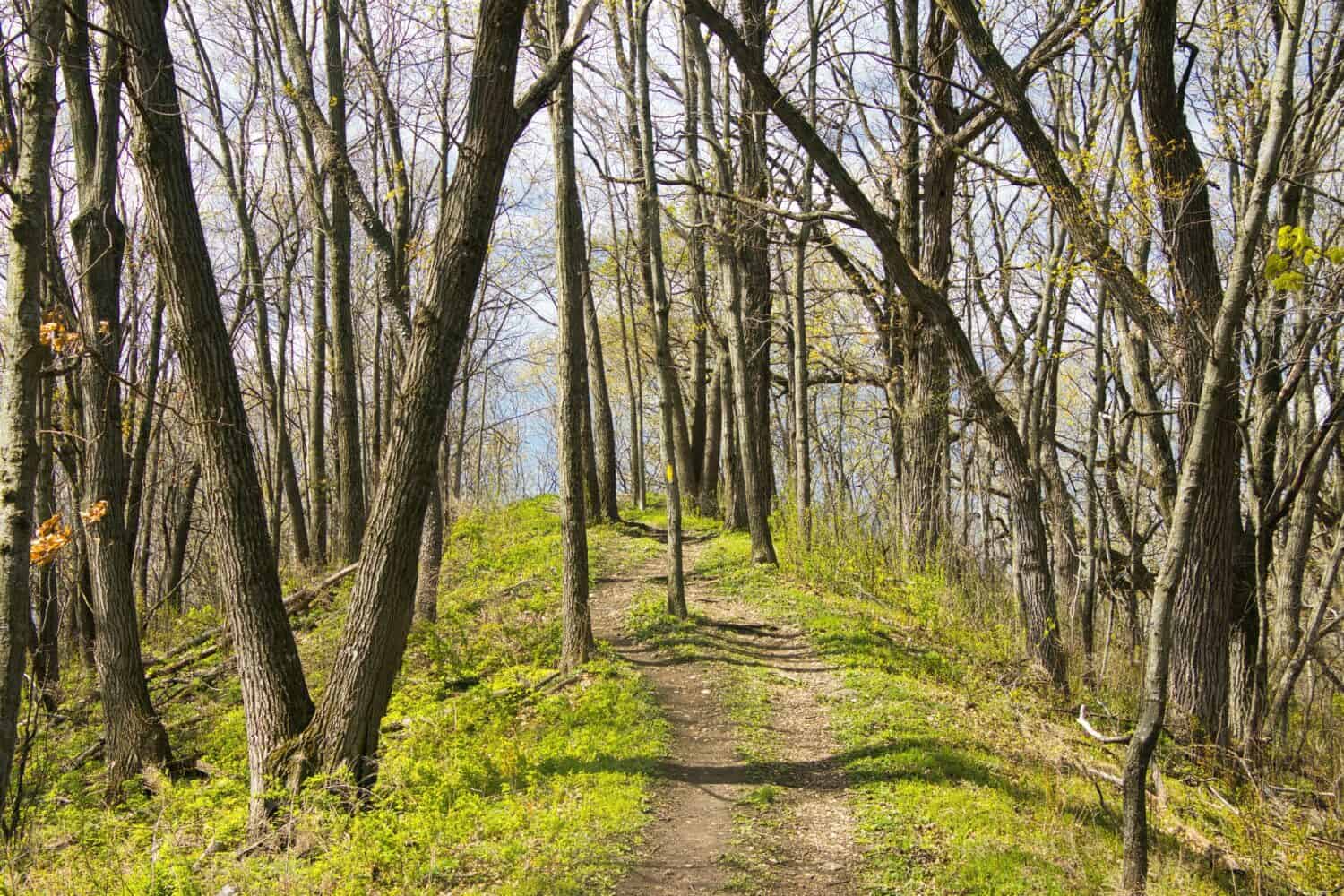One of 11 National Scenic Trails in the United States, the Ice Age Trail stretches across Wisconsin, running from Potawatomi State Park in Sturgeon Bay to Interstate State Park on the Minnesota border. The trail, which covers a total of 1,200 miles, is a testament to our planet’s amazing past. It is home to some amazing animals, including black bears, badgers, snakes, white-tailed deer, American red squirrels, North American porcupines, red foxes, songbirds, turtles, gray wolves, and more.
Black Bears
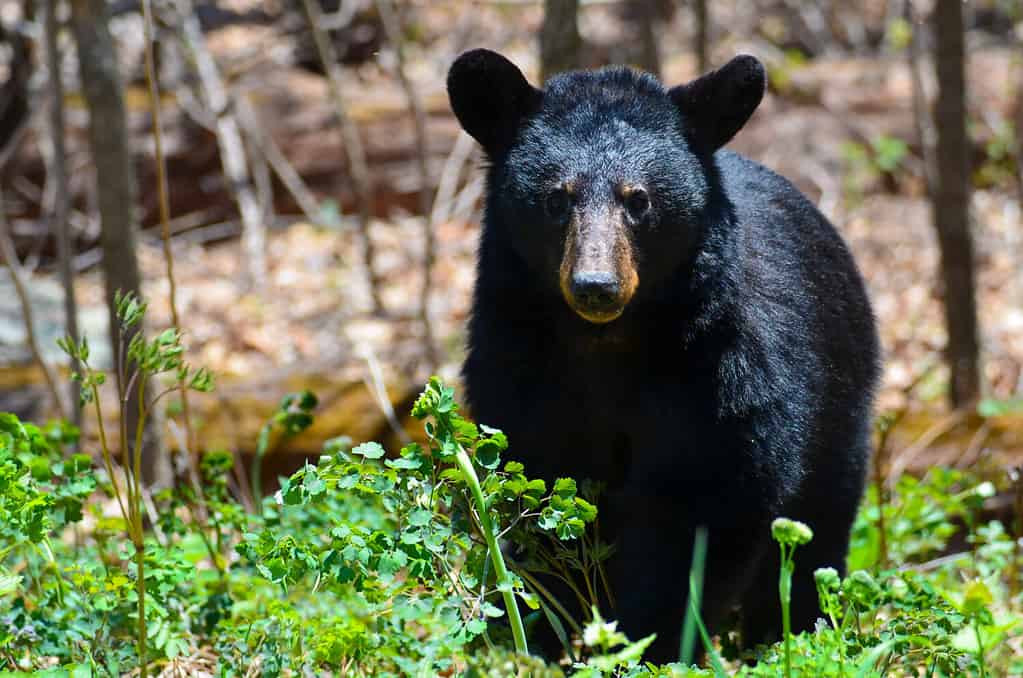
American black bears call the Ice Age Trail home.
©Orhan Cam/Shutterstock.com
The black bear (Ursus americanus) is one of the amazing animals on the Ice Age Trail. It’s a species of medium-sized bear that lives across North America. Black bears live in forests and are excellent tree climbers, often found sleeping in trees during the summer.
Large and stocky with a short tail, adult bears range from 4.3 to 6.2 feet (1.3 to 1.9 meters) in length and weigh between 130 and 660 pounds.
Black bears’ preferred choice of food is berries, roots, and salmon, but they also prey on moose, deer, insects, and occasionally carrion, which is the dead animal flesh that predators leave behind.
Come winter, black bears move to their dens to sleep away the season or hibernate. Their body temperature reduces, their heart rate lowers, and their breathing slows as they survive off all the body fat stored during summer and fall. It’s a clever strategy to ensure they won’t have to leave their dens to hunt for food in the bitter cold!
Badgers
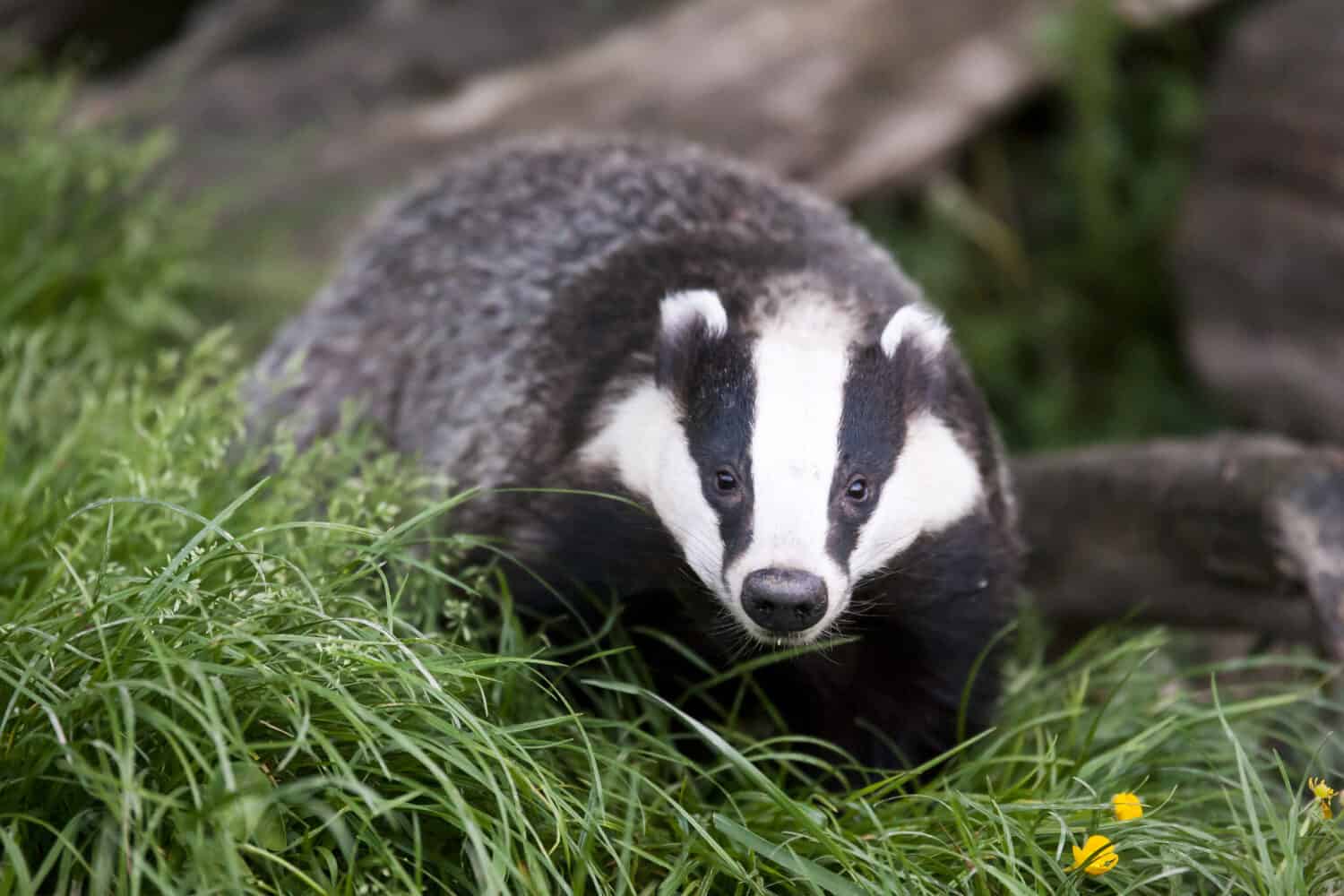
Badgers are the state animal of Wisconsin.
©Edward Hasting-Evans/Shutterstock.com
Taxidea taxus, or badgers, are among the bravest and fiercest wild animals on the Ice Age Trail. Often called ‘digging machines,’ badgers dig not just for pleasure but for food, shelter, and even survival.
With characteristic black and white strips on their face, small eyes and ears, short legs, and a stout body structure, badgers may seem harmless. But don’t let appearances fool you. As crazy as it sounds, badgers are notorious and fearless even when it comes to fighting larger animals.
Badgers are voracious eaters, consuming anything they get their hands on. Earthworms are their top choice of food, making up over half of their diet, but they also eat several insects, rodents, slugs, and bulbs.
Snakes

Copperheads are venomous and have forked tongues.
©Mark_Kostich/Shutterstock.com
Garter snakes, eastern hognose snakes, rattlesnakes, and copperheads are all found on the Ice Age Trail.
Garter snakes are typically shy and are not looking for a fight! They produce a very weak venom that is too mild to have an effect on humans; however, people who are allergic may experience light swelling.
Eastern hognose snakes sometimes called “puff adders,” are thick-bodied creatures, reaching about 46 inches (115 cm) long. Distinguished by upturned snouts, they have a background color of yellow, brown, green, gray, or black and often have large, rectangular spots down the middle of the back resembling eyespots.
Like garter snakes, they are mildly venomous but are not dangerous to people or pets. Bites from eastern hognose snakes are extremely rare.
Copperheads are quite large and heavy-bodied with triangular heads and elliptical pupils. If a copperhead bites you, the symptoms can be quite severe, including severe pain with rapid swelling, skin bruising, and trouble breathing.
White-Tailed Deer

Most white-tailed deer live about 2 to 3 years.
©Jim Cumming/Shutterstock.com
White-tailed deer are the smallest of the North American deer family. Shy and nervous, they characteristically wave their tails from side to side when startled. The term “white-tailed” is in reference to the underside of the deer’s tail.
In summer, adult white-tailed deer sport reddish-brown coats, while the color fades to a dull gray-brown in winter. The males, also called bucks, can be easily distinguished by their large antlers in summer and fall. They are extremely agile and can bound through the forest at speeds of up to 30 miles per hour.
American Red Squirrel
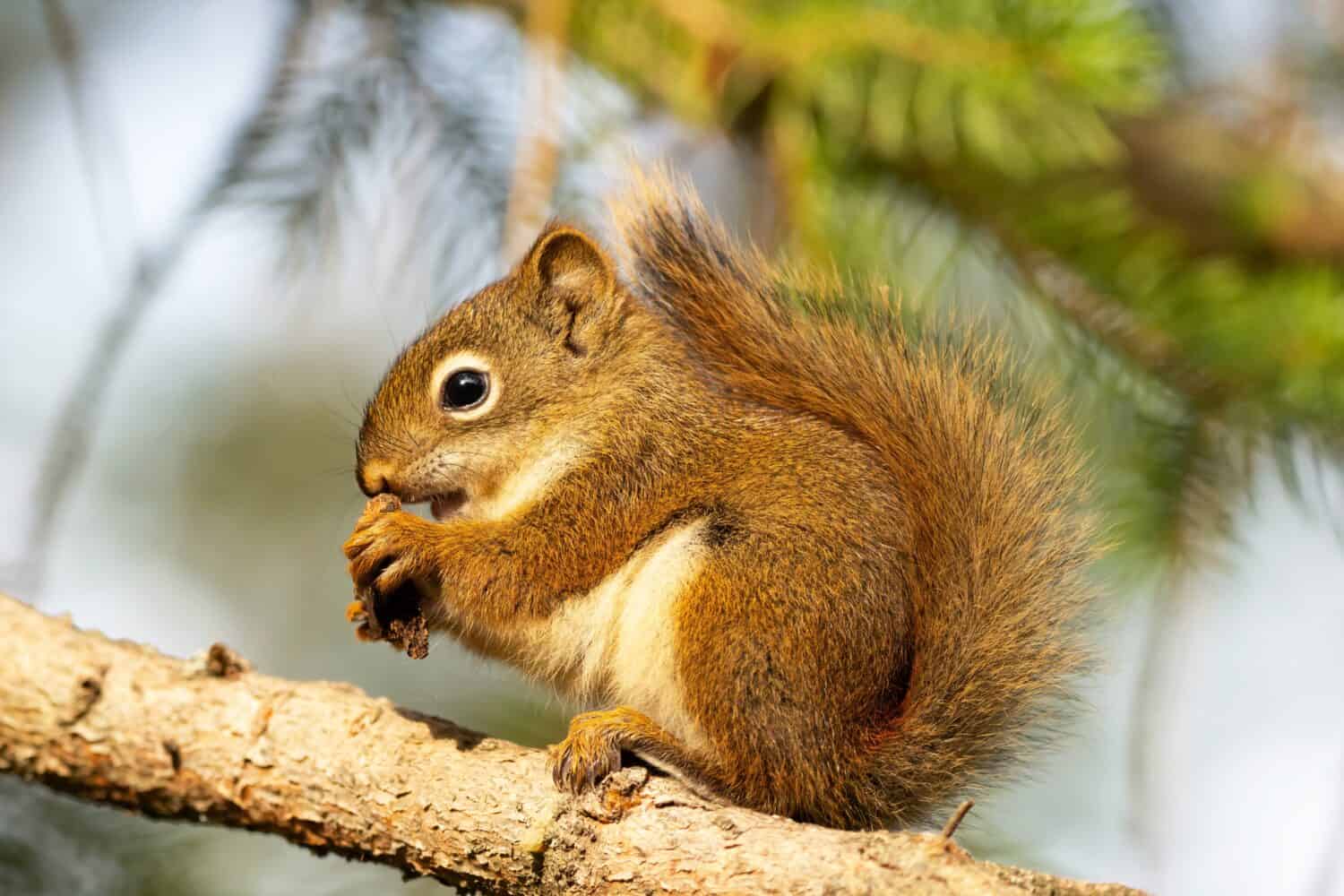
American red squirrels communicate via a descending trill and chatter of notes and chucks.
©Saeedatun/Shutterstock.com
The American red squirrel is also known as pine squirrel, chickaree, or simply red squirrel. This tree squirrel sports a bushy, dark red tail with hints of white and a thick, white circular eye ring around its black eyes. About 12 inches in size, these squirrels have fur that is grayish, red, or rust-colored and a white belly. They may occasionally have a black stripe on their sides.
Red squirrels prefer coniferous forests where they feast on the seeds and cones of evergreen trees. When available, they also munch on bird eggs, fruit, and berries. In the summer, American red squirrels collect and hide nuts and seeds for the lean winter season ahead.
North American Porcupine
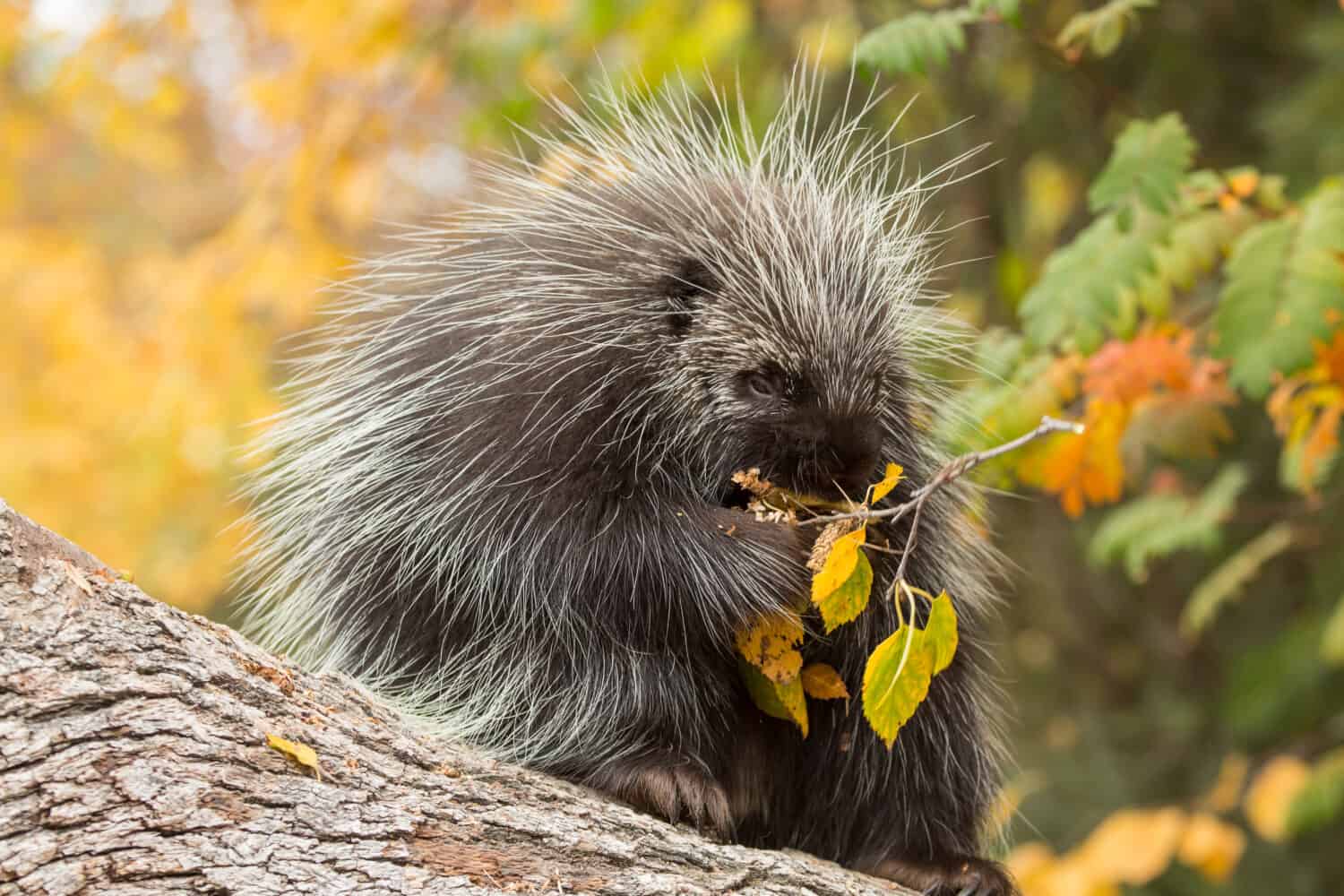
Porcupines are covered in about 30,000 quills.
©Warren Metcalf/Shutterstock.com
The North American porcupine is one of the more interesting animals on the trail. Its most distinguishing feature is its quills — and it has about 30,000 of them. Each quill is 2 to 3 inches in length, and lightly attached to the skin, so they easily come off when it encounters a predator. After entering the skin of a predator, the quills slowly work their way into the skin.
While porcupines ordinarily flee predators, if cornered, they will attack by erecting their quills, turning their backs to the attacker, and lashing their barbed tails.
Porcupines are great climbers, often climbing trees to search for food. They are also good swimmers. During their breeding season (fall and early winter), they conduct an elaborate courtship. This involves complex vocalizations and a courtship dance. The male showers the female with urine before mating.
Red Fox
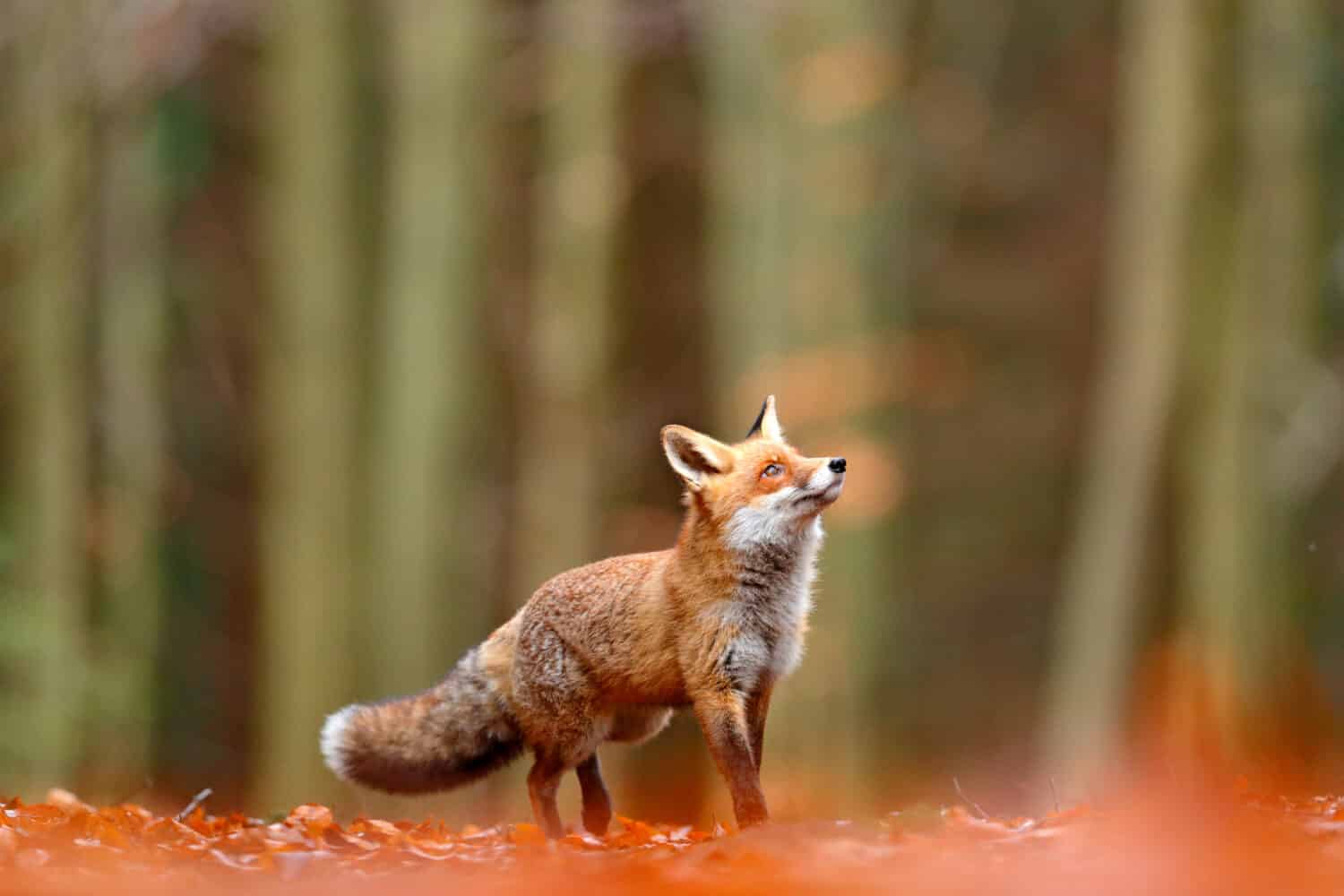
Red foxes have a reputation for being cunning and smart.
©Ondrej Prosicky/Shutterstock.com
Characterized by red fur across their face, sides, back, and tail, red foxes also have a grayish-white throat, chin, and belly. They have a long snout, black feet, and large, pointy, black-tipped ears. The red fox’s fluffy white-tipped tail is a defining feature.
While red foxes’ choice of food is rodents and rabbits, they also consume birds, amphibians, and fruit. With their excellent hearing abilities, they can hear rodents digging underground! If necessary, they may steal food from garbage cans or farms.
Red foxes mate in winter and the female builds a den immediately after mating. Females deliver between one and 12 pups per litter.
Songbirds
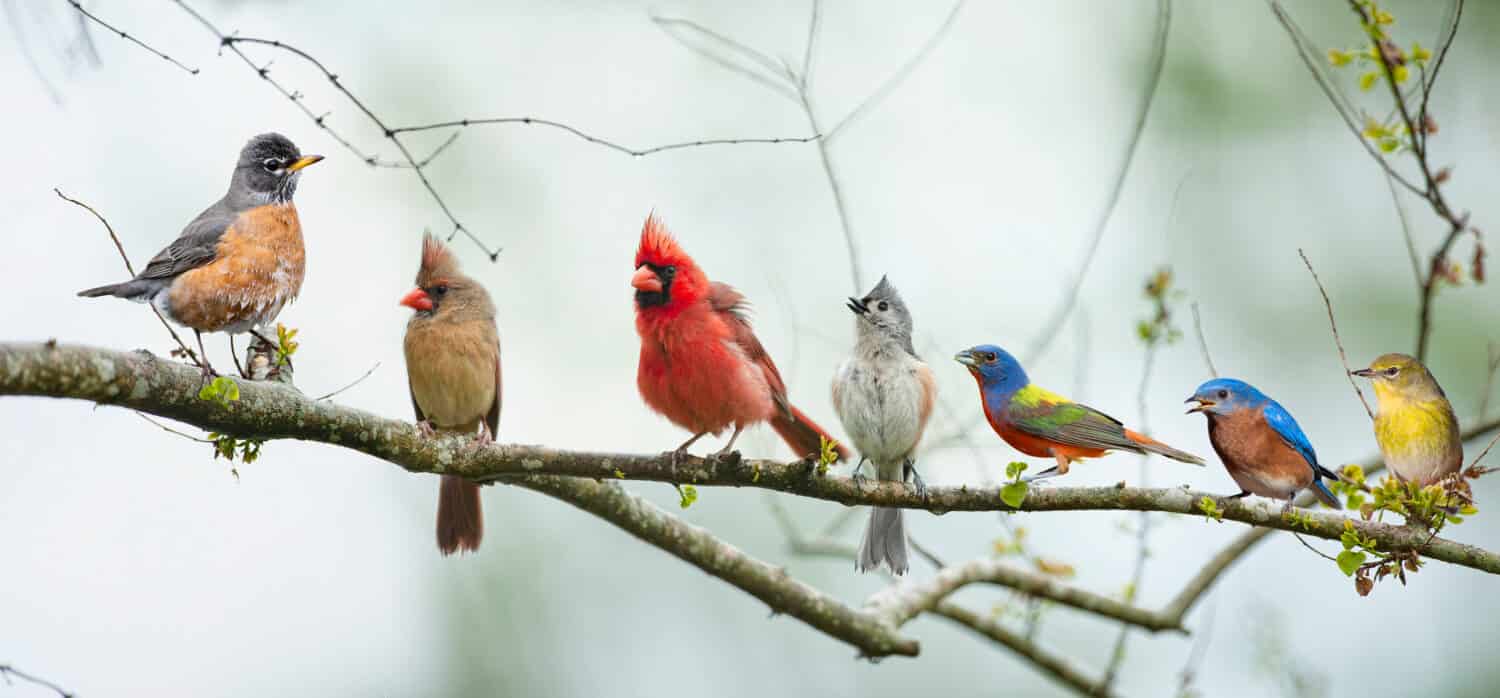
Songbirds make up about 60 percent of the world’s birds.
©Bonnie Taylor Barry/Shutterstock.com
There are around 6,000 species of songbirds in the world. Songbirds have a voice box with complex parts, enabling them to sing particularly musical, beautiful songs.
Songbirds have short, broad wings. They also have strong feet with three toes that point forward and one that points backward, which helps them grip perches.
Most songbirds eat insects, spiders, and other invertebrates. They also sometimes eat seeds, nuts, fruits, leaves, and shoots. You’re sure to spot a few types of songbirds among other amazing animals on the trail.
Turtles
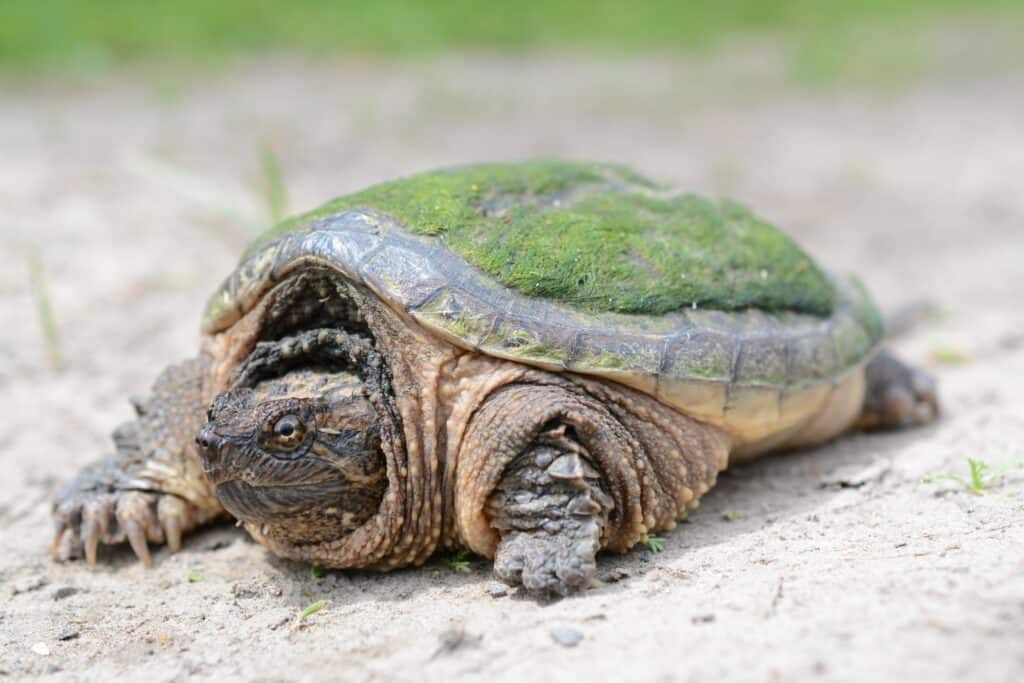
A variety of turtle species live near and on the Ice Age Trail, including
snapping turtles
.
©Trevor Meunier/Shutterstock.com
It isn’t uncommon to find a turtle blocking your path along the Ice Age Trail!
Turtles spend the majority of their lives in water and have webbed feet, flippers, and a streamlined body, all of which are designed for aquatic life. While sea turtles rarely leave the ocean, freshwater turtles live in ponds and lakes, sometimes climbing out of the water onto rocks to bask in the sun.
If you’re hiking the Ice Age Trail, be on the lookout for snapping turtles! They won’t hesitate to prove their namesake if you get too close.
Gray Wolf

With a preference for forming packs, gray wolves are particularly social animals.
©Nagel Photography/Shutterstock.com
Gray wolves are one of the largest predators that survived extinction at the end of the last ice age approximately 11,700 years ago. Also called timber wolves, gray wolves are canines sporting long, bushy, typically black-tipped tails.
Gray wolves usually live in large packs that number almost two dozen, but packs of six to 10 are most common.
Wolves form strong social bonds, a behavioral characteristic that makes the existence of the wolf pack possible. Packs establish a hierarchy of dominance that helps maintain order.
Summary of These 10 Animals on the Ice Age Trail
| Animals on the Ice Age Trail | Scientific Name |
|---|---|
| Black Bears | Ursus americanus |
| Badgers | Taxidea taxus |
| Snakes | Serpentes suborder |
| White-Tailed Deer | Odocoileus virginianus |
| American Red Squirrel | Tamiasciurus hudsonicus |
| North American Porcupines | Erethizon dorsatum |
| Red Foxes | Vulpes vulpes Linn |
| Songbirds | Passeri suborder |
| Turtles | Testudines order |
| Gray Wolves | Canis lupus |
Thank you for reading! Have some feedback for us? Contact the AZ Animals editorial team.

